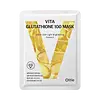What's inside
What's inside
 Key Ingredients
Key Ingredients

 Benefits
Benefits

 Concerns
Concerns

 Ingredients Side-by-side
Ingredients Side-by-side

Water
Skin ConditioningGlycerin
HumectantDipropylene Glycol
Humectant1,2-Hexanediol
Skin ConditioningButylene Glycol
HumectantHydroxyethylcellulose
Emulsion StabilisingHydroxyacetophenone
AntioxidantHexylene Glycol
EmulsifyingTrehalose
HumectantArginine
MaskingCarbomer
Emulsion StabilisingSodium Hyaluronate
HumectantAllantoin
Skin ConditioningDisodium EDTA
Polyglyceryl-10 Laurate
Skin ConditioningPolyglyceryl-10 Myristate
Skin ConditioningDipotassium Glycyrrhizate
HumectantPanthenol
Skin ConditioningParfum
MaskingWater, Glycerin, Dipropylene Glycol, 1,2-Hexanediol, Butylene Glycol, Hydroxyethylcellulose, Hydroxyacetophenone, Hexylene Glycol, Trehalose, Arginine, Carbomer, Sodium Hyaluronate, Allantoin, Disodium EDTA, Polyglyceryl-10 Laurate, Polyglyceryl-10 Myristate, Dipotassium Glycyrrhizate, Panthenol, Parfum
Water
Skin ConditioningGlycerin
HumectantMethylpropanediol
SolventDipropylene Glycol
Humectant1,2-Hexanediol
Skin ConditioningButylene Glycol
HumectantCarbomer
Emulsion StabilisingTromethamine
BufferingPanthenol
Skin ConditioningHamamelis Virginiana Water
AstringentPPG-26-Buteth-26
Skin ConditioningHydroxyethylcellulose
Emulsion StabilisingPEG-40 Hydrogenated Castor Oil
EmulsifyingAllantoin
Skin ConditioningDisodium EDTA
Lavandula Angustifolia Oil
MaskingAscorbyl Glucoside
AntioxidantHyaluronic Acid
HumectantTranexamic Acid
AstringentPaeonia Suffruticosa Root Extract
Skin ProtectingEthylhexylglycerin
Skin ConditioningPolysorbate 60
EmulsifyingDisodium Phosphate
BufferingSodium Phosphate
BufferingHydroxypropyl Cyclodextrin
MaskingGlutathione
Linalool
PerfumingWater, Glycerin, Methylpropanediol, Dipropylene Glycol, 1,2-Hexanediol, Butylene Glycol, Carbomer, Tromethamine, Panthenol, Hamamelis Virginiana Water, PPG-26-Buteth-26, Hydroxyethylcellulose, PEG-40 Hydrogenated Castor Oil, Allantoin, Disodium EDTA, Lavandula Angustifolia Oil, Ascorbyl Glucoside, Hyaluronic Acid, Tranexamic Acid, Paeonia Suffruticosa Root Extract, Ethylhexylglycerin, Polysorbate 60, Disodium Phosphate, Sodium Phosphate, Hydroxypropyl Cyclodextrin, Glutathione, Linalool
Ingredients Explained
These ingredients are found in both products.
Ingredients higher up in an ingredient list are typically present in a larger amount.
1,2-Hexanediol is a synthetic liquid and another multi-functional powerhouse.
It is a:
- Humectant, drawing moisture into the skin
- Emollient, helping to soften skin
- Solvent, dispersing and stabilizing formulas
- Preservative booster, enhancing the antimicrobial activity of other preservatives
Allantoin is a soothing ingredient known for its protective and moisturizingg properties. Because of this, it is often added to products with strong active ingredients.
Studies show higher concentrations of this ingredient can promote wound healing.
Though it can be derived from the comfrey plant, allantoin is produced synthetically for cosmetic products to ensure purity.
Learn more about AllantoinButylene Glycol (or BG) is used within cosmetic products for a few different reasons:
Overall, Butylene Glycol is a safe and well-rounded ingredient that works well with other ingredients.
Though this ingredient works well with most skin types, some people with sensitive skin may experience a reaction such as allergic rashes, closed comedones, or itchiness.
Learn more about Butylene GlycolCarbomer is a polymer of acrylic acid. Its main role is to create a gel consistency.
A high amount of carbomer can cause pilling or balling up of products. Don't worry, most products contain 1% or less of carbomer.
Dipropylene Glycol is a synthetically created humectant, stabilizer, and solvent.
This ingredient helps:
Dipropylene glycol is technically an alcohol, but it belongs to the glycol family (often considered part of the ‘good’ alcohols). This means it is hydrating and gentle on skin unlike drying solvent alcohols like denatured alcohol.
As a masking agent, Dipropylene Glycol can be used to cover the smell of other ingredients. However, it does not have a scent.
Studies show Dipropylene Glycol is considered safe to use in skincare.
Learn more about Dipropylene GlycolDisodium EDTA plays a role in making products more stable by aiding other preservatives.
It is a chelating agent, meaning it neutralizes metal ions that may be found in a product.
Disodium EDTA is a salt of edetic acid and is found to be safe in cosmetic ingredients.
Learn more about Disodium EDTAGlycerin is already naturally found in your skin. It helps moisturize and protect your skin.
A study from 2016 found glycerin to be more effective as a humectant than AHAs and hyaluronic acid.
As a humectant, it helps the skin stay hydrated by pulling moisture to your skin. The low molecular weight of glycerin allows it to pull moisture into the deeper layers of your skin.
Hydrated skin improves your skin barrier; Your skin barrier helps protect against irritants and bacteria.
Glycerin has also been found to have antimicrobial and antiviral properties. Due to these properties, glycerin is often used in wound and burn treatments.
In cosmetics, glycerin is usually derived from plants such as soybean or palm. However, it can also be sourced from animals, such as tallow or animal fat.
This ingredient is organic, colorless, odorless, and non-toxic.
Glycerin is the name for this ingredient in American English. British English uses Glycerol/Glycerine.
Learn more about GlycerinHydroxyethylcellulose is used to improve the texture of products. It is created from a chemical reaction involving ethylene oxide and alkali-cellulose. Cellulose is a sugar found in plant cell walls and help give plants structure.
This ingredient helps stabilize products by preventing ingredients from separating. It can also help thicken the texture of a product.
This ingredient can also be found in pill medicines to help our bodies digest other ingredients.
Learn more about HydroxyethylcellulosePanthenol is a common ingredient that helps hydrate and soothe the skin. It is found naturally in our skin and hair.
There are two forms of panthenol: D and L.
D-panthenol is also known as dexpanthenol. Most cosmetics use dexpanthenol or a mixture of D and L-panthenol.
Panthenol is famous due to its ability to go deeper into the skin's layers. Using this ingredient has numerous pros (and no cons):
Like hyaluronic acid, panthenol is a humectant. Humectants are able to bind and hold large amounts of water to keep skin hydrated.
This ingredient works well for wound healing. It works by increasing tissue in the wound and helps close open wounds.
Once oxidized, panthenol converts to pantothenic acid. Panthothenic acid is found in all living cells.
This ingredient is also referred to as pro-vitamin B5.
Learn more about PanthenolWater. It's the most common cosmetic ingredient of all. You'll usually see it at the top of ingredient lists, meaning that it makes up the largest part of the product.
So why is it so popular? Water most often acts as a solvent - this means that it helps dissolve other ingredients into the formulation.
You'll also recognize water as that liquid we all need to stay alive. If you see this, drink a glass of water. Stay hydrated!
Learn more about Water